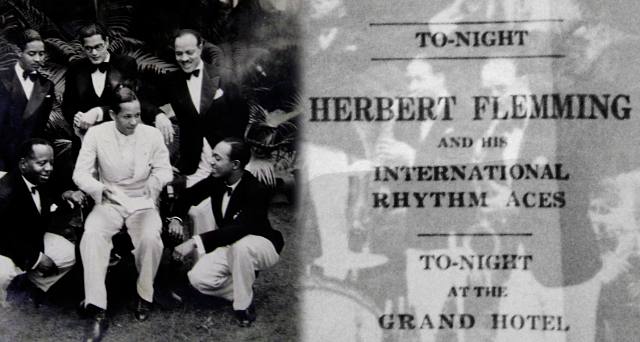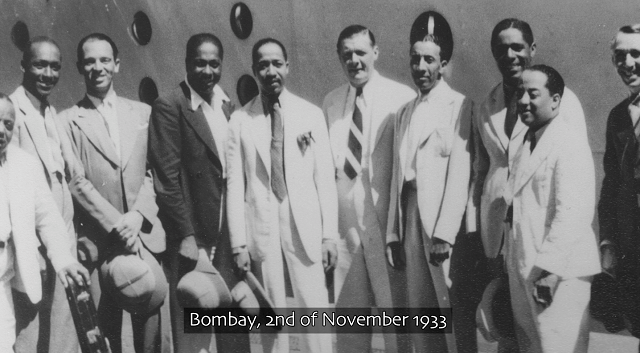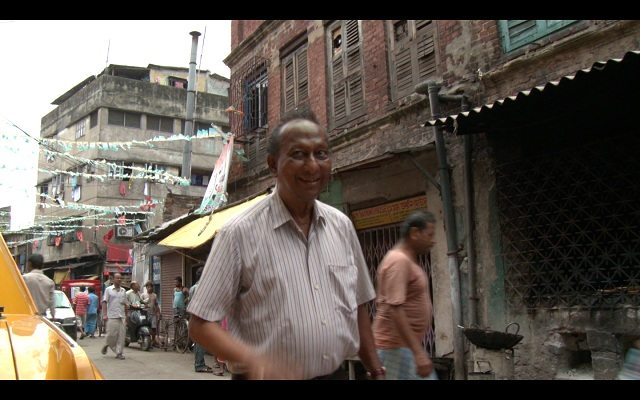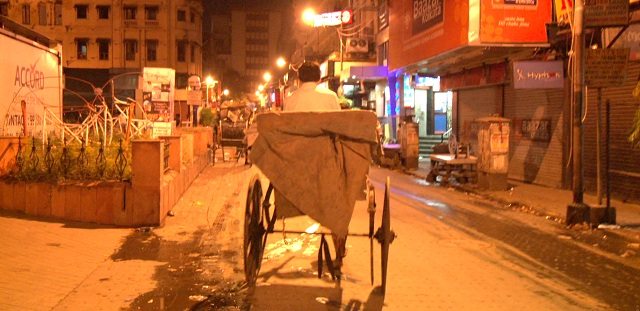
“Finding Carlton: Uncovering the Story of Jazz in India”
When Carlton Kitto was just a teenager many decades ago in Calcutta, he had a love, and its name was jazz. At first, it was an innocent attraction, but the notes kept calling him, taunting him. It became an obsession and soon the yearning was too great. He had to make a choice between staying back and fulfilling expectations, or leaving to chase jazz where it took him. Fifty years later he’s still playing for crowds in the new documentary that bears his name, “Finding Carlton: Uncovering the story of jazz in India.”

An Interview with Susheel Kurien – An Accidental Filmmaker
Susheel Kurien, who made the documentary, calls himself an accidental filmmaker. When he arrived in New York in the 1980s, later beginning his master’s degree at Teachers College at Columbia University, he was up to his ears learning computer programming and working at the same time, setting himself down the path of corporate success. He became a partner at KPMG, a managing director with an international consulting firm, but it wasn’t enough. His own love of jazz kept calling and it was getting louder. Kurien started listening to what he really wanted and it wasn’t long before he found himself in the midst of a film crew making this documentary. It became an exercise in learning the importance of following his dreams. In the interview below, read how Kurien navigated the process, what filming in India is like, and how “class […] over color” prevailed in India for people like Duke Ellington and Dizzy Gillespie.
Q: You’ve spoken about a life change, a period in your life where priorities shifted and making this movie became a passion you could no longer ignore. Can you talk about that time frame and what was going on in your life then?
A: Maslow talked about a hierarchy of needs, I remember this from my Sociology classes, (not much else, though) and right on top is “self actualization,” the pursuit of inner talent, creativity and fulfillment. I think we all yearn for this, but the challenge of our daily existence often makes this difficult. However, when you start tapping into this zone, it’s an irresistible force. For me this film was a way of pulling together skills and experiences from my past (creative and film), my love for jazz (which has stayed with me for almost 40 years), and the understanding of what made musicians tick, (which I discovered in a big way when I became a dedicated student of jazz guitar). I can’t honestly say that I had a vision or some flash of wisdom or enlightenment, it just grew over time and I morphed into who I really am.
Q: One of the big themes that’s present when you talk about this film is the importance of following one’s dreams. What advice do you give people who may feel like it’s a luxury they cannot afford to pursue?
A: In this context dreams are personal goals that reflect a deep level of aspiration. The mind reaches out beyond where you are today, and in effect takes you where you want to be. When you have a dream, you have a goal. Be prepared to have your dream reflected on by people whom you respect and are willing to tell you what you don’t want to hear. You may not get validation, but they are helping you refine your dream and move it from the mind to reality. Write it down, develop knowledge relating to the dream and create a pragmatic list of steps that can take you there. Then, stop dreaming and focus on the first step and get it underway, constantly exposing it to more critique. Be prepared to let events, fate, serendipity, chance, and sheer persistence play their part and then look back. You climb a mountain one rock at a time; what’s most important is that you give it a try. Lastly, remember it’s ok to realize your dream cannot be accomplished or will fail, failure is learning.

Q: Some say to work in India, one must take the good with the bad, expect a tough road and to be prepared for the worst. What adversity did you face in completing this film?
A: My India experience on this film was quite the opposite, good things happened all along, most importantly in the form of working with an amazing film crew whose creativity and talent made it possible. The key to working in India is flexibility. Compromise can work in your favor, and sometimes understanding that all participants can be winners can deliver a richer outcome. Having said this, making a film is an exhausting and demanding process that tests character and integrity, and challenges one’s initial assumptions. To quote the great Albert Maysles, “The very essence of filming is not controlling, but uncontrolled. You have some sort of idea of what your story might be, but you are ready at the same time to abandon that if it doesn’t happen or if something better comes along.” That last point was the real adversity: being willing to abandon.
Q: In a sizable amount of instances, the backstory is often as good as the featured story itself. What sort of things went into the making of this film that the audience doesn’t get to see?
A: This is a very insightful question. This film has many backstories, and one of the challenges was to determine which story thread to follow. What the audience does not see, for instance, is the story of how I “found’ Carlton through a newspaper article in the New York Times travel section that led me to pick up my phone and call a bar in Calcutta. They will never know what brought together over 100 people from all over the world who spoke with their wallets and helped make this film. They don’t see what happens when the incredible Louiz Banks opened his heart and his door to the crew and me. The search for archival music through spools of audiotape that reveals this awesome moment, finding music from 1961 isn’t there either; I can go on and on.

Q: In establishing the very first International Jazz Day, UNESCO Goodwill Ambassador Herbie Hancock has said jazz has been a major force in bringing people and cultures together. What are your thoughts on that, and what can you tell us about how jazz got to India?
A: Music is a language that all cultures understand, and when we share a musical experience, for those moments, however brief, we set aside all our differences and engage with the singular truth that music communicates. Suddenly it’s not about who we are or where we are from, and our intersection is now the music that we are sharing. Jazz created jazz cultures in many places, even in Shanghai in the ’30s. It came to India through some amazing African American musicians who really sowed the seed for long lasting impact. Yes, underlying all this was the pragmatic, economic fact that musicians needed jobs and in the early ’30’s the grand hotels and salons in India stood in marked contrast to a recession ravaged Europe and America. Jobs are what brought them there, not a romantic journey to bring the “gospel of jazz to the natives!”
Q: If skin-whitening creams and the pursuit of fair complexions are any indication of a certain groupthink that occurs in India today, what does it say about the significance of how African American musicians came to India and escaped oppression and discrimination during the Jim Crow era in the U.S.?
A: “Skin-whitening creams and the pursuit of fair complexions” should really be the subject of a documentary film that delves into the culture, society and mass media that keeps this groupthink going. Was this any different back in India of the ’30’s? Most likely not, but these rules did not apply to the musicians who came there, class prevailed over color. In other words, the African Americans did escape racism, oppression and discrimination by coming to India, but the overarching reason for going there was primarily economic; it was well paid gigs, the same thing that drives musicians today. They were well paid in contrast to local musicians, having been competitively sourced from gigs in Paris and the U.S. Society and the upper classes appeared to have viewed them with a different lens as opposed to that of color. They were stars, headliners, public figures, exotic if you will, but recognized for their musicianship and skill. They were not subject to the oppressive treatment that prevailed for many of their peers back home and were compensated well which contributed to what kept them there for a significant length of time. In fact, Teddy Weatherford, a pioneering African American pianist and bandleader, when asked how things were in India, was quoted as saying, “They treat us white folks just fine!”
Q: What project are you working on next and what lessons from this experience will you apply to your following work?
A: I am an accidental filmmaker, so filmmaking will continue to be the “second shift.” The next project will hopefully be much less demanding and complex, if there is such a thing. But it’s not going to be another feature length documentary, I assure you. I have been grabbed by some wonderful illustrations done by my good friend, artist Tony Vita, and I see an e-book or an interactive visual work that’s beckoning. I hope to do a short film over the summer, right here in New York. What did I learn? Follow your heart!
“Finding Carlton: Uncovering the story of jazz in India” will be screened at the U.N. on April 30 at 3:00 p.m. as part of Indian Mission’s programming for the first International Jazz Day. For more information FindingCarlton.com.

Sabrina Buckwalter is a student at the Columbia University Graduate School of Journalism, a member of the Stabile Center for Investigative Reporting and a video editor for StarringNYC.com. She is a member of the South Asian Journalists Association, Investigative Reporters and Editors, the New York Press Club and Society of Professional Journalists. Prior to moving to New York, she was a news features reporter for The Times of India based in Mumbai.

3 Comments
There’s a very good website on the Indian jazz story here. It’s an accompaniment to an extraordinary book, Taj Mahal Foxtrot. http://www.tajmahalfoxtrot.com/
Pingback: Lassi finds Carlton! | Bluerhythm's Blog
Via Facebook
Loved the article.Took me back to the the times when Louis Banks and Pam Crain were like rock stars on the jazz scene in India.Listened to the audio interview on Carlton Kitto.Fascinating. Quirky but last night went to a jazz performance by local artist Lynette White on grimy Sunset Blvd! in a tiny restaurant.Great sax, keyboards too and all the classic favorites. As they say, “Once you belong to a jazz club , you just can’t leave.”